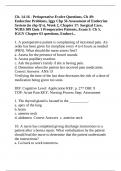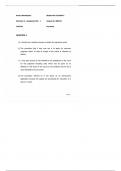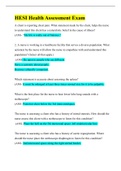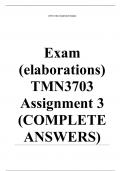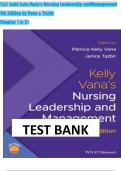Exam (elaborations)
Ch. 14-16 - Perioperative Evolve Questions, Ch 49: Endocrine Problems, Iggy Chp 56 Assessment of Endocrine System (in chp Q's), Week 2, Chapter 17: Surgical Care, NURS 309 Quiz 1 Preoperative Patients, Exam 3: Ch 5, IGGY Chapter 63 questions, Endocri..
- Course
- Institution
Ch. 14-16 - Perioperative Evolve Questions, Ch 49: Endocrine Problems, Iggy Chp 56 Assessment of Endocrine System (in chp Q's), Week 2, Chapter 17: Surgical Care, NURS 309 Quiz 1 Preoperative Patients, Exam 3: Ch 5, IGGY Chapter 63 questions, Endocri...
[Show more]
